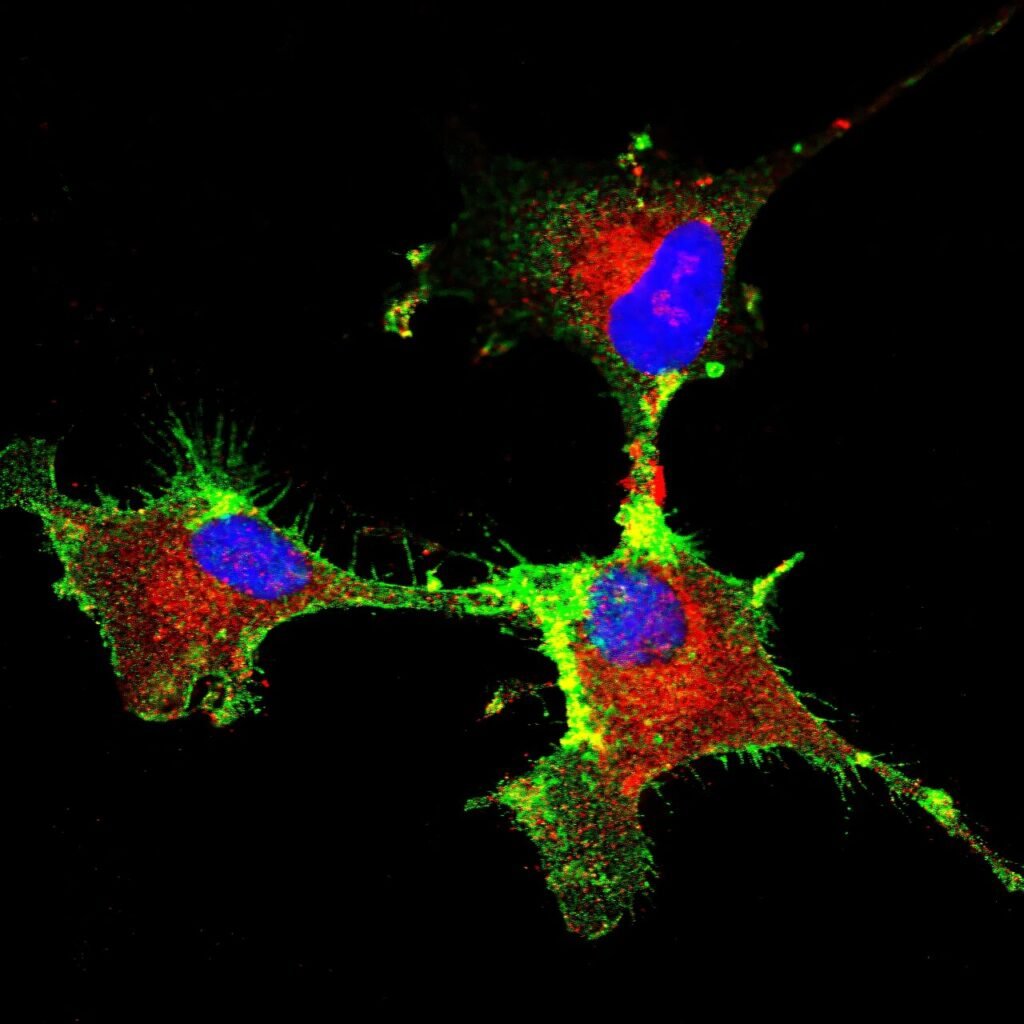Our study brings new perspectives for the development of more effective therapies,” said Lopes in a press release from the University of São Paulo. “Our findings show that prion protein is essential for the survival and proliferation of glioblastoma stem cells, which are the most aggressive cell type in the tumor.”
Prion protein, also known as PrP, is a cell surface glycoprotein that has been extensively studied in the context of neurodegenerative diseases such as Creutzfeldt-Jakob disease and scrapie. However, its role in cancer has been less explored until now.
The researchers found that glioblastoma stem cells express high levels of prion protein compared to non-stem tumor cells. When they blocked the expression of PrP in these cells, they observed a significant reduction in cell proliferation and an increase in cell death. This suggests that PrP is critical for the survival and growth of glioblastoma stem cells.
Furthermore, the team identified a signaling pathway involving PrP that promotes the activation of CD44, another protein associated with cancer stemness and tumor progression. Inhibiting this pathway also led to a decrease in cell proliferation and an increase in cell death, highlighting the potential of targeting PrP as a new therapeutic strategy for glioblastoma.
“Our results suggest that PrP could be a promising target for the development of new drugs to treat glioblastoma,” said Lopes. “By understanding the role of this protein in the progression of the disease, we can design more effective therapies that target the most aggressive cells within the tumor.”
The next steps for the research team include further investigating the molecular mechanisms by which PrP promotes glioblastoma progression and testing potential inhibitors of this protein in preclinical models of the disease. If successful, this work could lead to the development of novel treatments that improve outcomes for patients with this devastating form of brain cancer.
Overall, the study identifies a key protein in the progression of glioblastoma and opens up new possibilities for targeted therapies that could revolutionize the treatment of this aggressive cancer. With further research and clinical trials, these findings have the potential to significantly impact the lives of patients with glioblastoma and bring hope for better outcomes in the future.
Therapeutic implications
The findings of Lopes and her team have important therapeutic implications for the treatment of glioblastoma. By targeting the prion protein, it may be possible to disrupt the activity of tumor stem cells and prevent cancer recurrence and progression.
Furthermore, the ability of the prion protein to interact with other molecules, such as CD44, opens up new possibilities for combination therapies that target multiple pathways involved in cancer development.
Overall, this research highlights the importance of exploring novel strategies to improve patient outcomes in the fight against glioblastoma. By understanding the role of key proteins like the prion protein in cancer biology, researchers can develop more effective and targeted therapies that specifically address the mechanisms driving tumor growth and recurrence.
As Lopes concludes, “It’s through groundbreaking research like this that we can make significant advancements in the field of oncology and ultimately improve the chances of recovery and survival for patients facing aggressive and deadly cancers like glioblastoma.”


